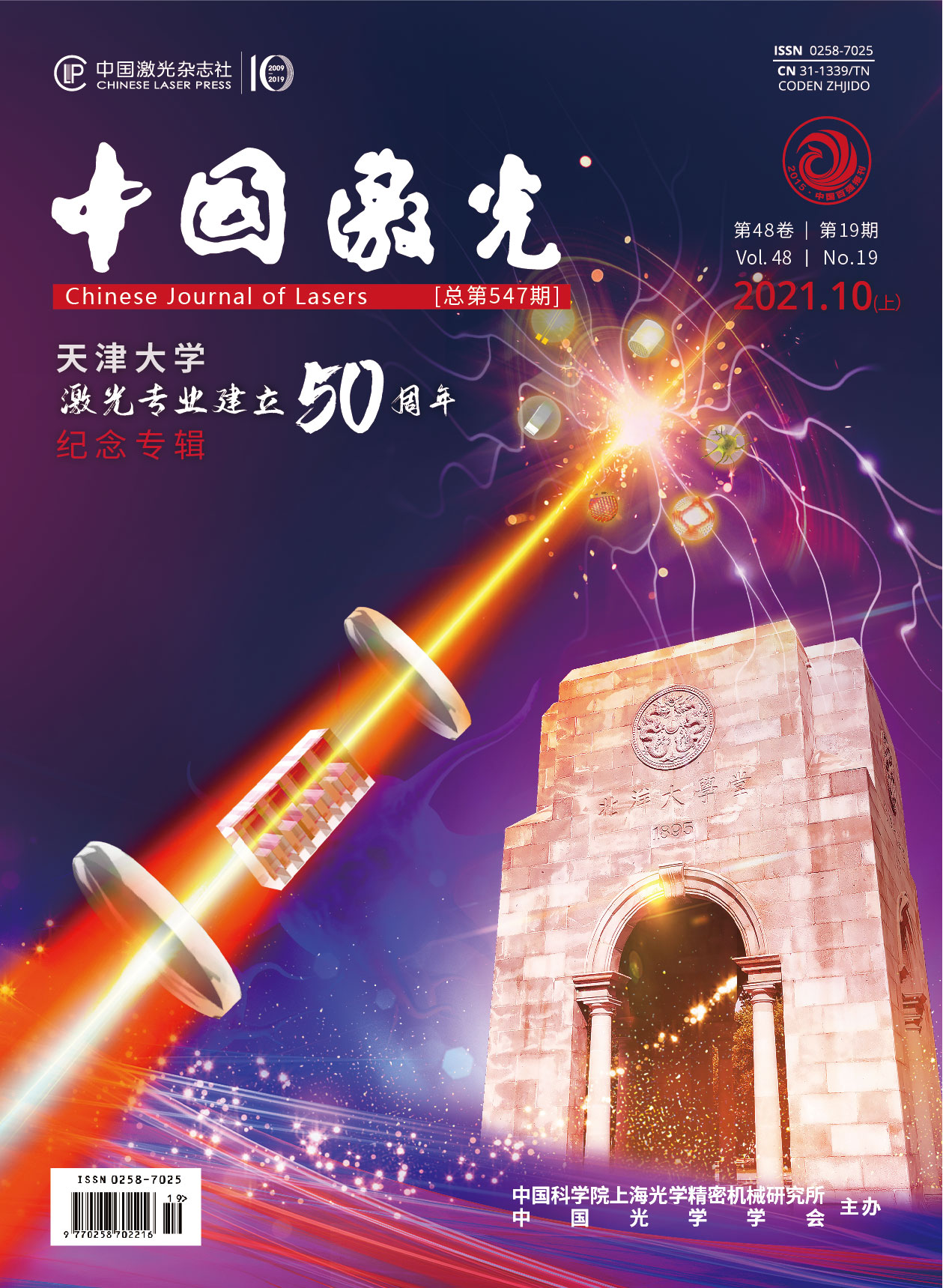基于超材料的太赫兹光电导天线  下载: 1395次
下载: 1395次
Significance As the cornerstone of terahertz technologies, terahertz radiation sources and detectors have attracted lots of attention. The research on terahertz sources and detectors has run through the entire development of terahertz technologies. In recent years, terahertz technologies have become more closely integrated with other disciplines, which puts forward higher requirements on the sources and the detectors. As the most typical terahertz transmitter and receiver, an photoconductive antennas (PCA) is widely used in laboratories and commercial terahertz systems due to its low request on pump power and compatibility with fiber technologies. The current commercial photoconductive antenna can meet the needs of spectral analysis of thin and low-absorption samples. However, compared with those of solid-state terahertz sources, the power of a PCA is at least two orders of lower. While compared with those of low-temperature thermal detectors, the sensitivity of a detection antennas is also insufficient, not to mention its low-pass filtering effect that is adverse to the detection of high-frequency terahertz waves. Thus, developing a high-performance PCA is an important issue to promote terahertz technologies.
Surprisingly, the emergence of metamaterials sheds light on the development of advanced PCAs. With the extremely high degree of design freedom, metamaterials have become one of the mostly concerned artificial electromagnetic media platforms. In the past 20 years, metamaterials have attracted many outstanding researchers in electromagnetics, optics, acoustics, and thermodynamics. Numerous novel functions have been realized one after another, such as negative refractive index, electromagnetic cloak, bounded state in the continuum, perfect absorption, meta?lens, plasmon induced transparency, optical orbital angular momentum coupling, and optical topological insulator. The unique properties of metamaterials can also be used to improve the performance of photoconductive antennas. This review systematically introduces the research works of efficient photoconductive antennas based on metal and dielectric metamaterials. The germination, development and broad application prospects of metamaterial?assisted photoconductive antennas are elaborated. The novel methods based on metamaterials have greatly promoted the development of photoconductive antennas and we hope this review could bring in more researchers in this new direction.
Progress We have classified the reported metamaterial-assisted photoconductive antennas into two categories. The first one is to enhance the interaction strength between the femtosecond laser pump and the substrate by using nano-scale metal or dielectric metamaterials. Metamaterials can manipulate the amplitude, phase and polarization of an electromagnetic wave with a high degree of freedom. In general, surface plasmons excited on metallic metamaterials have excellent field localization, which can tightly confine the light field near the structure, thereby enhancing the interaction between the photoconductive substrate and the incident light field. But so far, most metallic metamaterials have been severely affected by high ohmic losses, especially in the visible and near-infrared domains. In recent years, it has been found that dielectric metamaterials can also form field localization and have low absorption loss. Such metamaterials are generally composed of dielectric microcavities with high refractive index, which support rich electric field resonance modes. This review summarized the works which enhance the absorption of the pump light by the metallic or dielectric nanostructures, thus greatly improve the light-terahertz conversion efficiency and the detection sensitivity (as shown in Figs. 2, 6 and 7). In addition to being integrated in the antenna gap, the metallic nano-metamaterials can also be directly used as the electrode of the antenna, which changes the electrode shape. By this method, the transport time for the carrier to the electrode is reduced, and the performance of the terahertz photoconductive antenna is improved (as shown in
The second category is to design micron-scale metallic or dielectric metamaterials for directly manipulating terahertz waves. Designing a micron structure near the antenna electrode can effectively manipulate the spectral characteristics of the radiated terahertz wave, as shown in Figs. 8 and 9. Another way to manipulate the radiated terahertz pulse is to construct an all-dielectric meta-lens sticked to the photoconductive substrate for replacing the hyper-semispherical silicon lens and collimating the terahertz wave to a parallel beam (as shown in
Conclusion and Prospect This review introduces a series of terahertz photoconductive antennas integrated with metamaterials. Their excellent properties and novel functions may bring a huge application potential, which have greatly promoted the development of photoconductive antennas.
The methodology reviewed here is still in its early stage. We believe that more metamaterials with novel functions will be applied in the future. Besides, the introduction of new materials, for example two-dimensional materials such as graphene and black phosphorus, may cause fundamental changes in the design of photoconductive antennas. Another possible research direction is to integrate phase gradient metamaterials based on the generalized Snell’s law for manipulating the wavefront of photoconductive antenna emitted terahertz wave. Besides, considering the significance of photomixers to terahertz communications, using new metamaterials to realize an active control of photomixers becomes more and more important.
In short, the novel antennas shown in this review have a great application potential in terahertz technologies, which are expected to fundamentally promote the development of photoconductive antennas and significantly advance the performance of terahertz photoconductive devices.
谷建强, 王可蒙, 许祎, 欧阳春梅, 田震, 韩家广, 张伟力. 基于超材料的太赫兹光电导天线[J]. 中国激光, 2021, 48(19): 1914004. Jianqiang Gu, Kemeng Wang, Yi Xu, Chunmei Ouyang, Zhen Tian, Jiaguang Han, Weili Zhang. Metamaterials-Based Terahertz Photoconductive Antennas[J]. Chinese Journal of Lasers, 2021, 48(19): 1914004.







